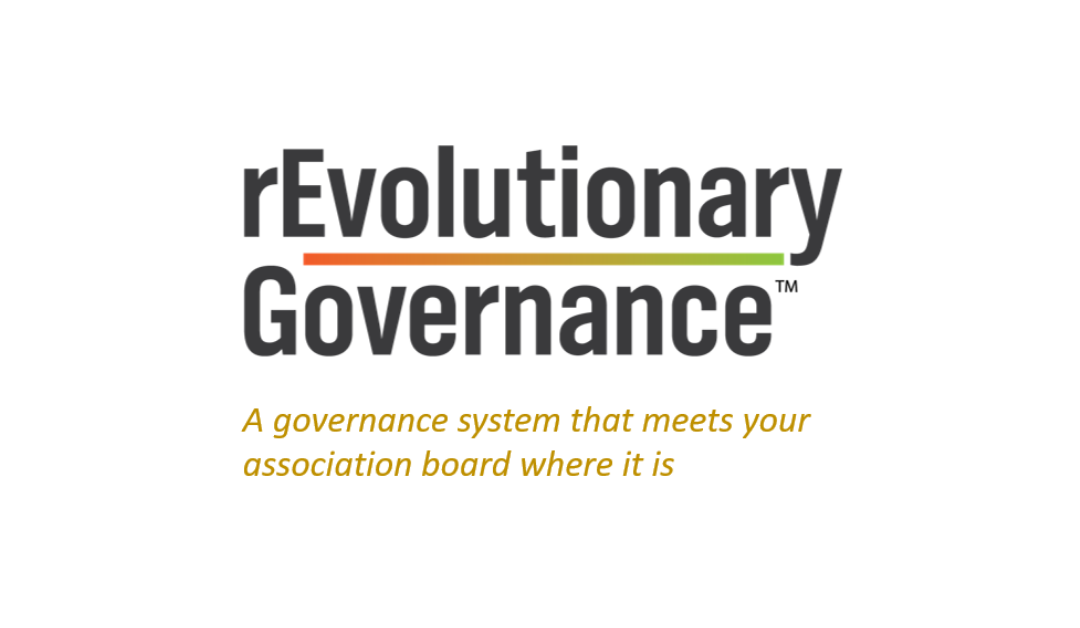A common theme we’ve observed in leadership literature in both the non-profit and for-profit sectors is an “institutional” focus.
In the for-profit sector, most management and leadership best practice frameworks are built on the study of large corporations. Consultants or university researchers conduct studies on the best practices of major corporations and share their findings in bestselling business books and articles in the Harvard Business Review, for example.
For those who own small businesses or are sole proprietors, most of the business literature and training programs available are interesting but not particularly relevant. An article on the importance of your human resources department in driving corporate culture is fairly meaningless to an organization that doesn’t even have a full-time human resources professional on staff, let alone a department.
In the association/nonprofit sector, governance models, literature and training tend to be built around best practices of large organizations. Of course, the word “large” is relative. Even the largest of associations are small compared to the largest of for-profit corporations. But the relative differences in association size and resources are significant when it comes to governance practices.
The current governance models available to associations are designed for universities, nonprofit hospitals – or in the trade/professional association sector, organizations with budgets large enough to support specialty staff and complex volunteer structures. The local association with a few hundred members and a handful of volunteers, which is managed by one part-time staff person, is left out of the mix. Most of the best practices require resources and sophistication they don’t have.
“rEvolution Governance™ is built on the idea that every association, regardless of size and resources, can operate optimally at the stage of evolution it is in now.”
In short, current association/nonprofit governance models take a one-size-fits-all approach based on best practices at organizations that have reached a certain minimum size and complexity. However, there is an equal or greater number of organizations that are the right size for their stakeholders’ needs but not large enough to effectively use the models available.
In light of this disparity, we saw the need for a governance model that doesn’t claim a single set of governance best practices for all types and sizes of associations.
Entitled “rEvolutionary Governance ™,” this model meets organizations and board members where they are. It recognizes that organizations and their boards operate at various stages of evolution. And, just as many small businesses and sole proprietors flourish within their niche, and are not striving to become mega-corporations, many successful associations do well focusing within their chosen niche.
“This book takes the idea of an evolutionary framework and transforms it into a complete governance system. It provides simple steps for a board to take at each evolutionary stage to progress further along a continuum in an organized fashion.”
rEvolutionary Governance™ is built on the idea that every association, regardless of size and resources, can operate optimally at whatever stage of evolution it’s in. We offer only the best practices and key actions appropriate to that stage and to move the board to the next stage if moving is advantageous.
The rEvolutionary Governance system’s unique approach is that it is built around The Six Stages of Board Evolution. Our six stages governance framework is new, though the idea that boards evolve is not.
Stages of board evolution have been posited for both non-profit and for-profit boards. For example, Karl Mathiason III wrote a paper for BoardSource outlining three stages of a board lifecycle.
His stages are:
- Founding/Organizing
- The Governing Board
- The Institutional Board
Similarly, William R. Boulton of the University of Georgia wrote an article entitled “The Evolving Board: a Look at the Board’s Changing Roles and Information Needs,” which enumerates stages of development in corporate boards in the for-profit sector. Like Mathiason, Boulton describes three stages – 1) legitemizing, 2) auditing and 3) directing – as well as the key transitions that need to occur before each stage.
rEvolutionary Governance™ reflects our experience, observations and best practices with the many types of association boards we have helped over the years. The six stages in the rEvolutionary Governance™ system are most applicable and practical for this broad array of organizations.
Most texts for boards provide a laundry list of ideas to become a better board, along with checklists, sample policies and procedures, etc. that can prove overwhelming. With so many tools to choose from, paralysis often sets in as boards wonder “where do we start?” They do not understand why they are where they are, or the positive features of their evolutionary stage.
In the end, a board may simply default to adopting one or two best practices that will clearly make their meetings more efficient. More significant changes seem too daunting because, after all, they are volunteers and have day jobs and families.
This book takes the idea of an evolutionary framework and transforms it into a complete governance system. It provides simple steps for a board to take at each evolutionary stage to progress further along a continuum in an organized fashion.
The rEvolutionary Governance™ system lets boards make smaller changes one step at a time based on where they are on a continuum. This makes the scale of change more manageable.
Our system is designed with every size and type of association in mind and the stages are built to apply to your association, wherever you fit on the continuum.
That is the primary aim of this book and the system – to make becoming a better board easier, more straightforward and methodical.
About the Author
 Jeff Arnold, MAM, CAE, is CEO of Leading Associations which supports professional associations by bringing a full spectrum of board, management and operational solutions that help them work through challenges that inhibit progress, and grow membership.
Jeff Arnold, MAM, CAE, is CEO of Leading Associations which supports professional associations by bringing a full spectrum of board, management and operational solutions that help them work through challenges that inhibit progress, and grow membership.
Jeff brings a combination of association experience and formal education to Leading Associations’ clients. His present responsibilities include dealing with both the strategic and tactical aspects of running associations. His special areas of expertise include working with boards and committees, certification, training programs, and membership systems. You can reach Jeff on LinkedIn or via email.

